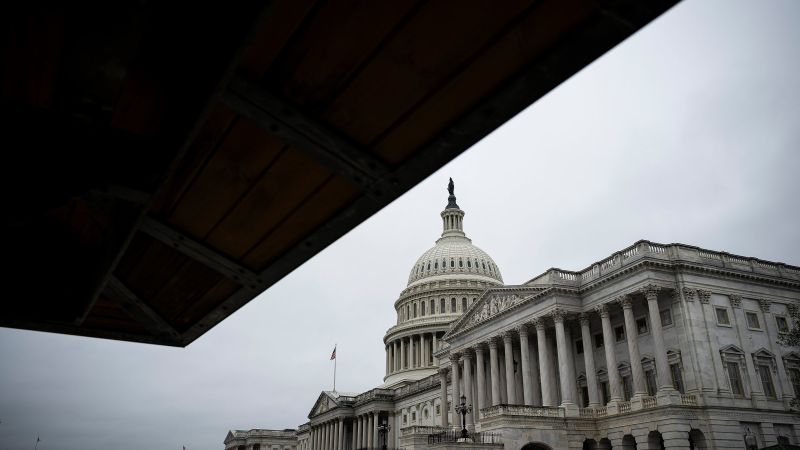
A version of this story appeared in CNN’s What Matters newsletter. To get it in your inbox, sign up for free here.
The same American electorate could return either a Republican or a Democratic majority in the US House in the event of a close election in 2026 as the two parties race to redraw congressional maps to their advantage.
So far, Republicans are having more luck, with new maps on the books or awaiting a signature in Texas and Missouri.
If everything goes their way in the known and potential redistricting efforts, it’s possible President Donald Trump’s party could pick up a dozen seats simply by carving up Democratic districts in red states.
But that assumes Democrats find no joy in their own efforts.
Here’s how the map is changing so far.
Texas: Five new GOP-leaning seats. In Texas, Republicans already redrew the map to put potentially five new red seats in play for the 2026 midterm election. They carved up seats held by Democrats around Dallas, Houston and San Antonio as well as the Gulf shore and the border with Mexico.
Ohio: As many as 3 possible new GOP-leaning seats. Ohio is required to redraw its already gerrymandered maps because of a quirk of state law. As that process begins, Republicans see an opportunity to carve out a few more Republican-leaning seats around Akron, Toledo and, maybe, Cincinnati.
Missouri: 1 new GOP-leaning seat. Republicans who control the state government passed a new map to carve up the Kansas City-area set held by longtime Rep. Emanuel Cleaver. It’s awaiting Gov. Mike Kehoe’s signature, but a signature-gathering campaign is underway in an attempt to block it.
Plus, Republicans are eyeing more. In Indiana, Gov. Mike Braun is considering a November special session to redraw congressional maps after a pressure campaign from the White House, including a visit from Vice President JD Vance.
The White House has similarly applied pressure on lawmakers from Kansas, where Democrats hold one seat; Nebraska, where outgoing GOP Rep. Don Bacon’s Omaha district will be a top target of Democrats; and New Hampshire, which has two seats held by Democrats, according to reports. In Florida, a committee has been formed to pursue the idea of a mid-decade redistricting. All of those efforts may not come to fruition, but Republicans are certainly looking across the map.
Democrats have fewer options
California: Voters will get a say. Golden State voters will go to polls in November to either endorse or veto Democrats’ plans to squeeze five more seats out of a map drawn by a nonpartisan commission that already favors them. California Democrats’ proposed new map could effectively cancel out the Texas gamble.
Utah: A court-mandated re-draw. A judge in Utah is requiring the legislature to redraw maps that ignored a nonpartisan redistricting commission and carved up a single Democratic seat around Salt Lake City among the state’s four congressional districts. The end result could be the return of a competitive district in Utah.
There are also nascent efforts to consider redistricting in New York, Illinois and Maryland. In New York, Democrats would have to find a way around the state constitution, which prohibits gerrymandering. In Illinois, congressional maps are already drawn to favor Democrats and there are only three Republican seats. There’s only one Republican seat in Maryland, and a previous effort to carve it up failed in the courts.
There are no guarantees — look at Latinos in Texas
Even if the new map doesn’t put existing Republican seats at risk, which isn’t a guarantee, it’s possible they can’t win all five of the new targets. This is essentially a shell game where they’re moving voters from one district to another based on how they’ve voted in the past.
In Texas, the gamble for Republicans is that Latino voters will continue to back the GOP at the same level as they did in 2024, when there was a dramatic shift despite Trump’s rhetoric about immigration on the campaign trail.
CNN Senior Data Analyst Harry Enten said on “CNN News Central” that polling suggests Texas Latinos could be having second thoughts about the president’s policies.
Noting that many of the five newly redrawn districts Republicans are counting on in Texas are majority-Latino, Enten looked at Trump’s favorability among Latino voters there and found that since just before the election, it’s gone from being about an even split to net negative by 32 percentage points.
That trend is playing out across the country, Enten said. The drop is even worse on the economy, which can be a motivating issue for many voters. Texas Latinos preferred Trump to Harris on the economy by 9 percentage points before the election. Now, he is decidedly underwater on the issue among Latino voters, according to a recent University of Texas/Texas Politics Project poll.
“If the bet is on Texas Latinos to stay in the Republican camp like they did in 2024, that is a bet that Republicans may not, in fact, be able to cash in at this point, based upon the polling,” Enten said.
Democrats have history in their favor
Trump and Republicans are fighting the tide of history with their redistricting efforts. Only twice since the Great Depression has the president’s party not lost seats in a midterm election. In both of those exceptions — 1998 and 2002 — the president in question had strong job approval ratings. Trump does not.
But it’s also true that with fewer and fewer competitive seats, the pendulum does not swing as far. Democrats need to pick up a net of three seats to gain control of the House and gain a foothold of power in Washington, DC, to stand up to Trump.
President Joe Biden’s Democrats only lost nine seats in 2022, compared with the 40 Republican seats Trump lost in 2018.
No amount of redistricting is likely to save the House for Republicans if a true wave against Trump should materialize, but in this world of historically narrow House majorities, five to 10 more friendly seats could certainly change the equation.



